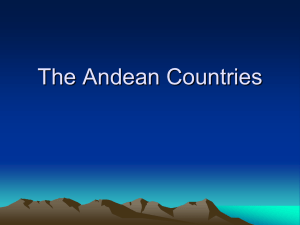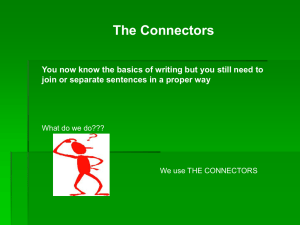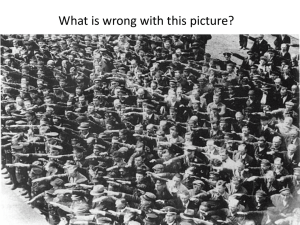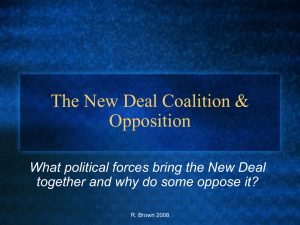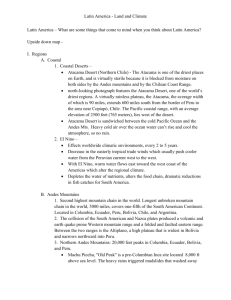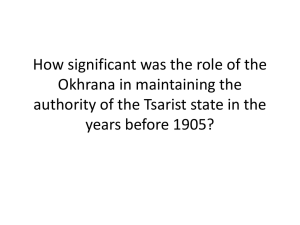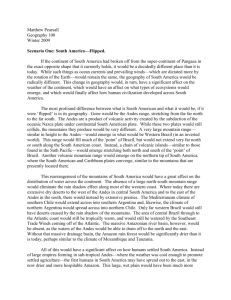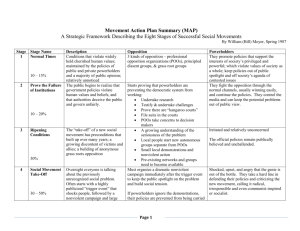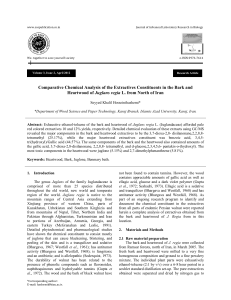Trends and Conflicts in the Extractive Sector: Public Policy
advertisement
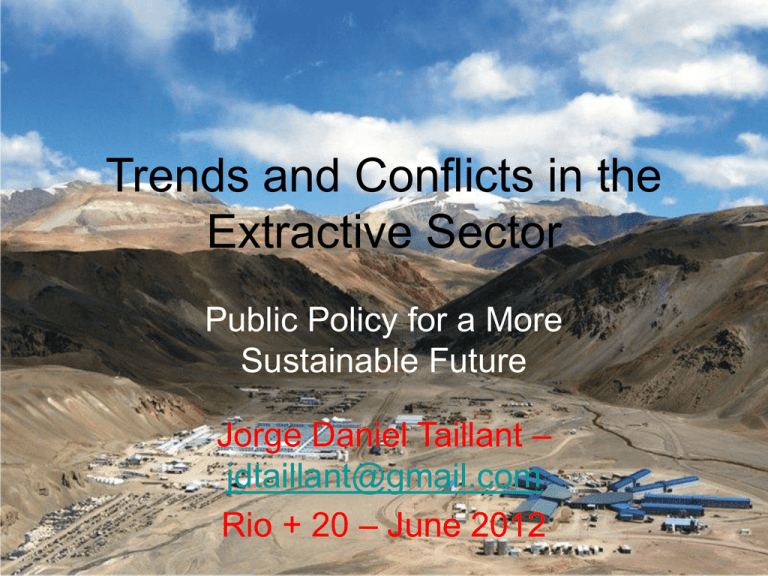
Trends and Conflicts in the Extractive Sector Public Policy for a More Sustainable Future Jorge Daniel Taillant – jdtaillant@gmail.com Rio + 20 – June 2012 Trends • Exponential increase in investments, increased exploration and extraction as a result of expanding economies and increase in mineral demand • Parallel increase of sophisticated use of modern communication technologies and social networking to discuss negative externalities extractives • Rising social sensitivity and inflexible entrenched opposition to social and environmental risks and lack of information/participation posed by extractives • Entrenched and Diametric Debate over exclusive YES/NO to extractives • Increasing engagement in legislatures in response to social pressure, to band certain types of mining outright (open pit, arsenic, etc.) • Growingly evident governmental incapacity to manage the sector, with deepening problems • Political / Financial Deadlock in specific Extractives Projects and Sector in general Where is this leading us? • • • • Increased conflict Increasingly entrenched opposition Difficulties with investments Project suspension due to public unrest or outright banning (due to pressure on legislative frameworks) • Tension and Deadlock • Divergent interests of sector with community needs • Violence and Human Injury Responses / Corporate • • • • • • • • Corporate CSR Programs Sustainability Reporting Introduction of Sustainability Management Alliances with Pro-Mining Stakeholders (labor, suppliers, government) Conflict management with Opposition Reinforced positive media to investors Inside lobbying/pressure with public officials Alienation of sophisticated CSO opposition Andes Mountains – Chile/Argentina Responses / Communities • • • • • • • • • • Interest and defense for/of Jobs … vs. Raised awareness and concern over social/env risks Social networking on concerns Increased engagement on issues Increased sophistication on advocacy/communication Increased Tension/Conflict Entrenched Opposition / Road Blocks Int’l Complaints Creation of Self Convened Assemblies Social Movement in Parallel tracks to established CSOs Andes Mountains – Chile/Argentina Responses / State Actors • • • • • • • • • • • Extractives Promotion Favorable financial regulatory framework and incentive Favorable legal framework Fast approval of EIA processes Creation of Parallel Environmental Authorities Executive Favor to Sector Opposition to social resistance (criminalization of protestors) Limited or no communication to stakeholders Limited or no engagement/participation of stakeholders Limited or no access to information by stakeholders Limited or no access to justice to affected parties Andes Mountains – Chile/Argentina Key areas to address • Limited or no information • Poor or non-existent engagement between critical civil society and companies • No or failed communication between community and State (no articulation by State) • Poor capacity (and willingness) of State to monitor and control • No pressure from companies on State to be more transparent • Institutional irrationality between promotion/control • Failure of access to justice and conflict resolution mechanisms (national/int’l) Trends and Conflicts in the Extractive Sector Public Policy for a More Sustainable Future Jorge Daniel Taillant – jdtaillant@gmail.com Rio + 20 – June 2012
